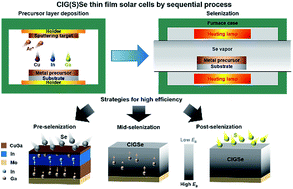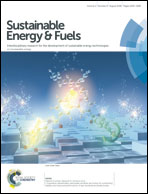Strategies toward highly efficient CIGSe thin-film solar cells fabricated by sequential process
Abstract
Thin-film solar cells with copper indium gallium selenide (CIGSe) as the absorber layer are considered an attractive alternative to crystalline Si-based (c-Si) solar cells due to their significant potential for low-cost solar electricity production with a minimal requirement of raw materials. The efficiency record of 22.6% was achieved recently in CIGSe solar cells, which was comparable to c-Si solar cells. However at present, only about 2% of solar panels are made from CIGSe due to its poor competitiveness in terms of production costs. On a lab scale, a one-pot 3-stage co-evaporation process is the most widely developed and utilized to obtain high-quality CIGSe films; however, this process itself is considered to be the main factor in the high production costs. A two-step sequential process, i.e., the deposition of a Cu–In–Ga metal precursor layer followed by selenization, is considered an alternative technology to decrease the production costs and increase the throughput. Thanks to a variety of efforts, this process is already being used industrially and its official record (22.3%) is almost equivalent to the highest recorded from the one-pot 3-stage co-evaporation process (22.6%). In this review, the working mechanism of CIGSe solar cells with the determining factors of the open circuit potential and current density as well as the factors affecting the efficiency in the two-step sequential process are discussed. Then, some efficiency improvement strategies consisting of three categories, namely pre-selenization, mid-selenization, and post-selenization, are discussed. Furthermore, how these strategies can be extended to much more cost-effective methods, such as solution-processed CIGSe thin-film synthesis, is also discussed. Finally, the future prospects and further efficiency improvement options are briefly outlined.



 Please wait while we load your content...
Please wait while we load your content...